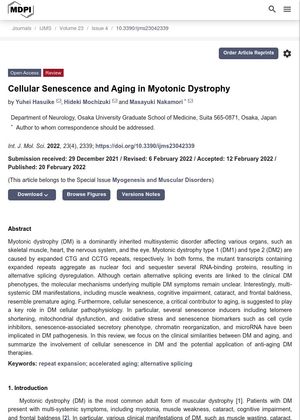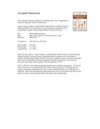Cellular Senescence and Aging in Myotonic Dystrophy
February 2022
in “
International Journal of Molecular Sciences
”

TLDR Myotonic Dystrophy may age cells faster, and drugs that target aging could be potential treatments.
Myotonic Dystrophy (DM), a multisystemic disorder, exhibits symptoms similar to premature aging, including muscle weakness, cognitive impairment, cataract, and frontal baldness. The disorder is caused by expanded CTG and CCTG repeats in DM type 1 (DM1) and type 2 (DM2) respectively, leading to mutant transcripts that aggregate as nuclear foci and sequester several RNA-binding proteins, resulting in alternative splicing dysregulation. Cellular senescence, a critical contributor to aging, is suggested to play a key role in DM cellular pathophysiology. DM patients often exhibit symptoms associated with aging, such as reproductive and perinatal problems, skin changes resembling androgenetic alopecia, higher risk of cancer, and gastrointestinal symptoms. DM patients have fine hair with reduced follicular density, similar to androgenetic alopecia, and balding dermal papilla cells (DPCs) grew slower in vitro than non-balding DPCs. Anti-aging agents, such as senolytics and senomorphics, are proposed as potential treatments for DM.

